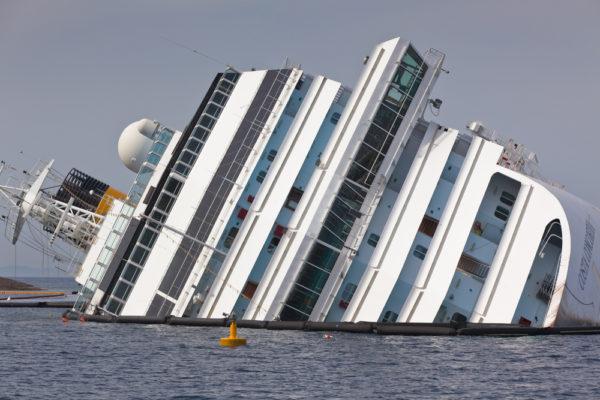Are you worried that your family’s cruise could end in disaster? Does the thought of being on a massive ship in the middle of the ocean keep you up at night?
The cruise industry has changed dramatically since 1912. Complete sinkings of modern cruise ships are extremely rare, and the safety lessons from past tragedies have reshaped how ships are built, staffed, and operated. For most travelers, the bigger risks are the ordinary ones, like travel delays, rough seas, or something going wrong on the way to the port.
Key Takeaways
How often do cruise ships sink? Cruise ship sinkings are exceptionally rare—but the “how many” depends on definitions.
- What counts as a “cruise ship”? Ocean-going cruise ships, historic ocean liners, ferries, and river vessels are often mixed together in online lists.
- What usually happens in real incidents: The most high-profile events involve groundings, fires, or flooding, where passengers are evacuated successfully.
- Bottom line: Modern cruising operates at a huge scale, and true “sinkings” remain extremely uncommon.
In this guide, we’ll nail down what “sinking” means, share the modern track record, and explain why today’s ships are designed to give crews time to respond and passengers time to evacuate.

Notable Passenger-Ship Sinkings People Think About (And How They Compare to Modern Cruises)
The Titanic disaster in 1912 claimed roughly 1,500 lives and triggered major changes in maritime safety, including the first SOLAS treaty (Safety of Life at Sea) in 1914. It’s also the reference point many people have in mind when they worry about cruising today.
Since the Titanic, international regulations have been overhauled repeatedly. Here are the most significant sinkings involving passenger ships:
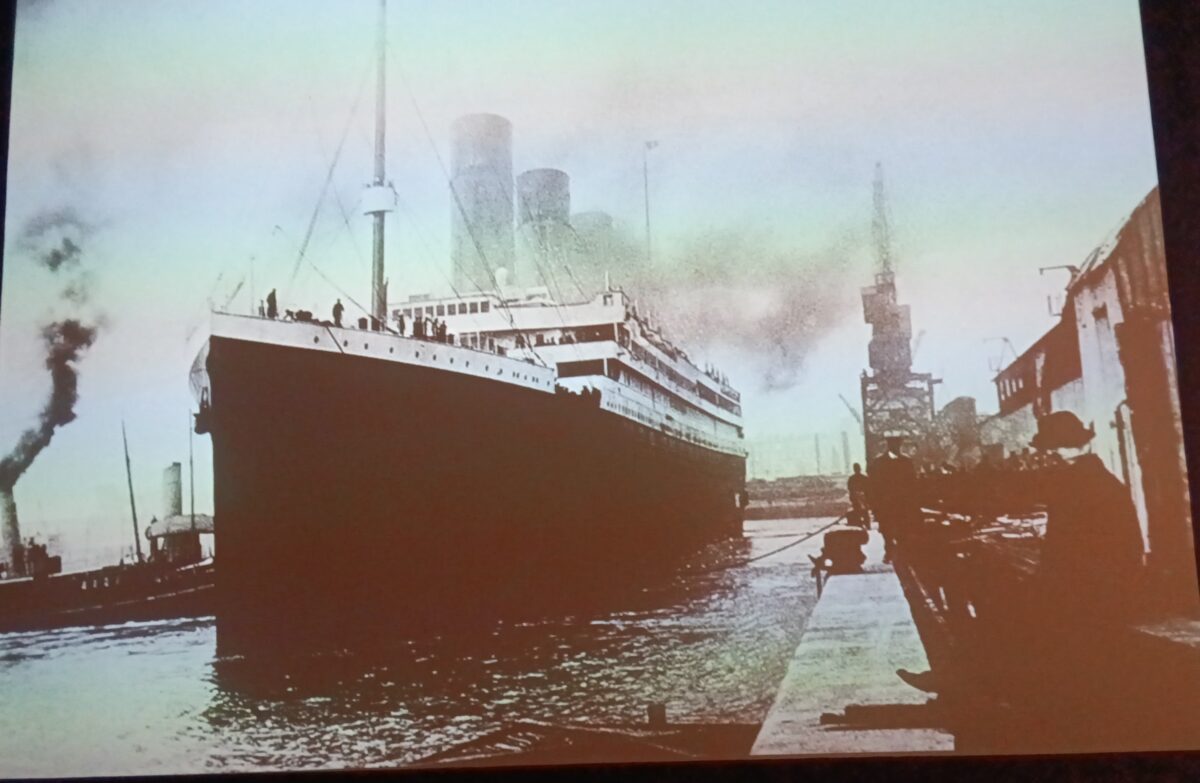
Early 20th Century and Mid-Century Passenger Ships (Not Modern Cruise Vacations)
- RMS Titanic (1912): ~1,500 deaths; helped drive the first SOLAS treaty (1914)
- RMS Lusitania (1915): 1,198 deaths; torpedoed during World War I
- SS Andrea Doria (1956): 46 deaths; collision off Nantucket
Modern Cruise-Era Examples (1980 to Present)
- MTS Oceanos (1991): 0 passenger deaths; passengers evacuated before the ship sank
- MS Sea Diamond (2007): 2 missing; struck rocks near Santorini, Greece
- MV Explorer (2007): 0 deaths; hit ice in Antarctica, and passengers were evacuated
- Costa Concordia (2012): 32 deaths; ran aground off the Italian coast and became a total loss
The key difference between Titanic-era ships and today is that today’s ships operate under modern standards, communications systems, and evacuation procedures. So even in serious incidents, there’s far more opportunity to get people off the ship safely.
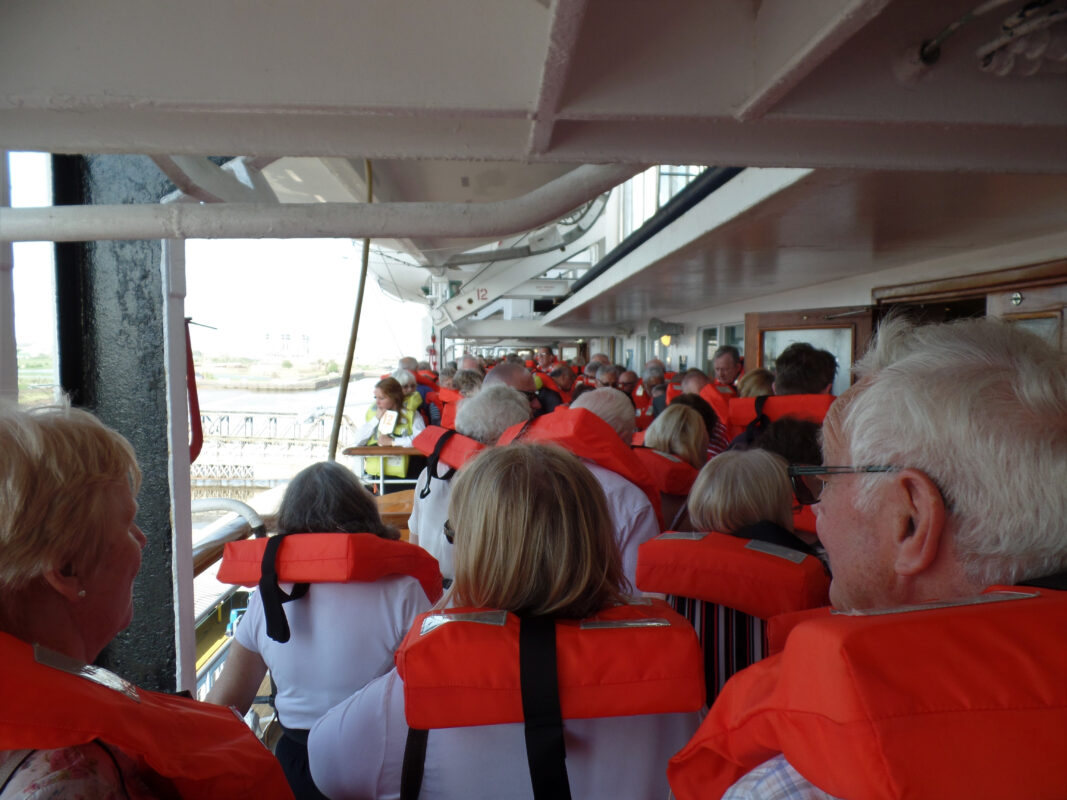
What Changed After Each Disaster?
One reason today’s incidents tend to look very different than early-1900s tragedies is that the industry treats major failures as lessons. Big events typically lead to new requirements, better training, and tighter procedures.
- After the Titanic: early SOLAS efforts emphasized life-saving capacity for everyone onboard, continuous radio watch, and improved iceberg monitoring.
- After the Andrea Doria: the industry put more focus on how radar is used in real conditions—especially bridge decision-making and communication between ships.
- After the Costa Concordia: SOLAS was amended so passenger musters happen before or immediately on departure, instead of within 24 hours of embarkation.
The International Maritime Organization (IMO) continues to update SOLAS over time, which is one reason modern ships operate under requirements that didn’t exist a few decades ago.
And that brings us to the question most new cruisers really mean: how often do modern cruise ships actually sink, when we use a clear definition?
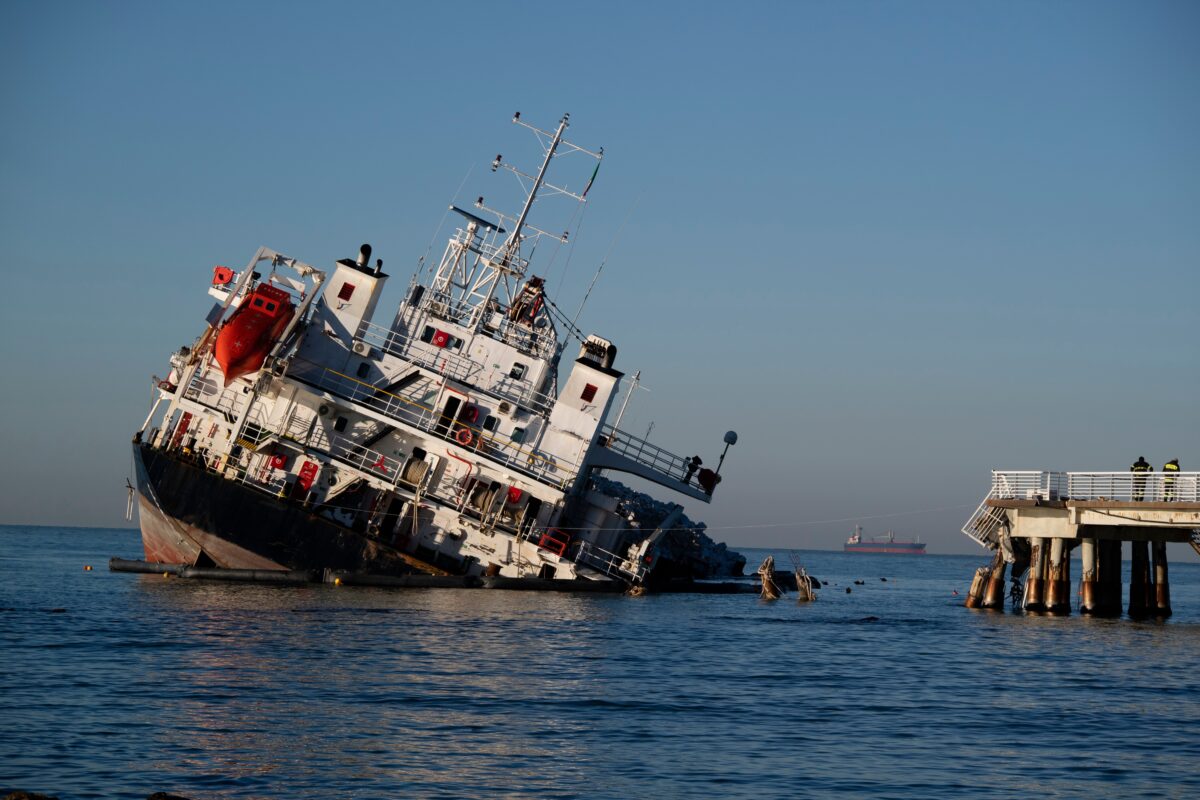
So How Often Do Cruise Ships Sink? The Modern Track Record (With Definitions)
Counts vary depending on what you include. This table focuses on ocean-going passenger ships—including ocean liners and cruise ships—in incidents where the vessel either sank or became a total loss after the event.
For purposes of this article, “sank” means the ship ended up underwater, while “total loss” means it could not realistically return to passenger service (even if it didn’t fully sink). We’re not counting incidents where the ship remained operational.
| Ship (year) | What happened (high-value summary) | Outcome + passenger impact |
| RMS Titanic (1912) | Struck an iceberg in the North Atlantic during its maiden voyage. | Sank; ~1,500 deaths. |
| RMS Empress of Ireland (1914) | Collision in fog on the St. Lawrence River. | Sank rapidly; 1,012 deaths. |
| SS Principessa Mafalda (1927) | Mechanical failure (propeller/shaft damage) led to flooding off Brazil. | Sank; 314 deaths reported. |
| MS Georges Philippar (1932) | Fire on/near maiden voyage in the Gulf of Aden. | Sank; death toll varies by source (often reported ~40–50+). |
| SS Morro Castle (1934) | Major onboard fire off New Jersey; vessel later grounded/became a total loss. | Disaster with 137 deaths reported. |
| SS Andrea Doria (1956) | Collision with MS Stockholm near Nantucket in fog. | Sank; 51 deaths total (46 Andrea Doria passengers + 5 Stockholm crew). |
| MS Prinsendam (1980) | Engine-room fire off Alaska; ship abandoned; later sank. | 0 deaths; large-scale evacuation/rescue often cited as a standout success. |
| MS Mikhail Lermontov (1986) | Struck rocks near New Zealand; flooding led to sinking. | Sank; 1 crew death reported; passengers evacuated. |
| MV Jupiter (1988) | Collision shortly after departing Piraeus; rapid sinking. | Sank; multiple deaths reported (commonly described as 2 passengers + 2 crew), early reports varied. |
| MTS Oceanos (1991) | Flooding in rough seas off South Africa. | Sank; all passengers/crew rescued, no fatalities. |
| Pegasus (1991) | Major fire while at the pier in Venice; vessel declared a total loss (often described as scuttled/partially sunk during firefighting). | No passenger loss reported; included as a “total loss” case in ship-loss lists. |
| Royal Pacific (1992) | Collision with a fishing trawler in the Strait of Malacca; sank quickly. | Sank; rescue saved most, but fatalities/missing were reported in contemporaneous coverage. |
| MS Achille Lauro (1994) | Engine-room fire off Somalia; ultimately sank. | Sank; 2 deaths reported. |
| Sun Vista (1999) | Fire in the Malacca Strait; ship later sank. | Sank; all passengers + crew reported rescued. |
| SeaBreeze I (2000) | Storm off Virginia; vessel sailed without passengers; capsized/sank. | Sank; 34 crew rescued; no passengers aboard. |
| MS Sea Diamond (2007) | Ran aground near Santorini; evacuated; later sank. | Sank; 2 passengers missing/presumed dead. |
| MV Explorer (2007) | Hull damage in Antarctic waters; evacuation and rescue by nearby vessels. | Sank; all aboard rescued (official investigations published). |
| Costa Concordia (2012) | Grounding/capsize off Isola del Giglio after route deviation. | Total loss; 32 deaths on board (plus a later salvage fatality sometimes listed separately). |
| Orient Queen (2020) | Capsized/sank at berth after the Beirut port explosion. | No passengers reported; crew fatalities/injuries reported; total loss. |
Wartime Passenger-Ship Sinkings (Not Comparable to Modern Cruising)
Some of the most infamous passenger-ship sinkings happened during wartime, under conditions that simply don’t apply to modern leisure cruising—mines, torpedoes, troop transport, and evacuation missions. We’re listing them separately because they often appear in “cruise ship sinking” lists online, but they aren’t a fair way to judge the safety of today’s cruise vacations.
| Ship (year) | What happened (high-value summary) | Outcome + passenger impact |
| RMS Lusitania (1915) | Wartime passenger liner torpedoed off Ireland during World War I. | Sank; 1,198 deaths reported. |
| HMHS Britannic (1916) | Wartime hospital ship (sister ship to Titanic) struck a naval mine in the Aegean Sea. | Sank; 30 deaths reported (most survived). |
| SS President Coolidge (1942) | Wartime ocean liner converted to a troopship; accidentally struck U.S. mines near Espiritu Santo (Vanuatu). | Sank; 2 deaths reported despite thousands aboard. |
| MV Wilhelm Gustloff (1945) | Wartime evacuation/transport ship sunk by a Soviet submarine in the Baltic Sea. | Sank; estimated ~9,000+ deaths (often cited ~9,343). |
Why Modern Cruise Disasters Look Different Than Early-1900s Tragedies
Modern cruise ships are built with multiple layers of protection designed to prevent a bad situation from escalating quickly:
- Watertight compartments: damage is contained so flooding doesn’t spread unchecked
- Redundant systems: backup power and critical equipment reduce “single point of failure” scenarios
- Modern navigation and routing: GPS, radar, weather routing, and electronic charts help crews avoid hazards and plan around storms
- Training and drills: crews practice emergency procedures, and passengers are routed through muster procedures early in the sailing
No ship is risk-free, but today’s vessels are designed to buy time to assess the problem, contain damage, and coordinate rescue if evacuation becomes necessary. Two modern examples often cited are the Oceanos (1991) and the Explorer (2007): both ships ultimately sank, yet people were evacuated and rescued without passenger fatalities.
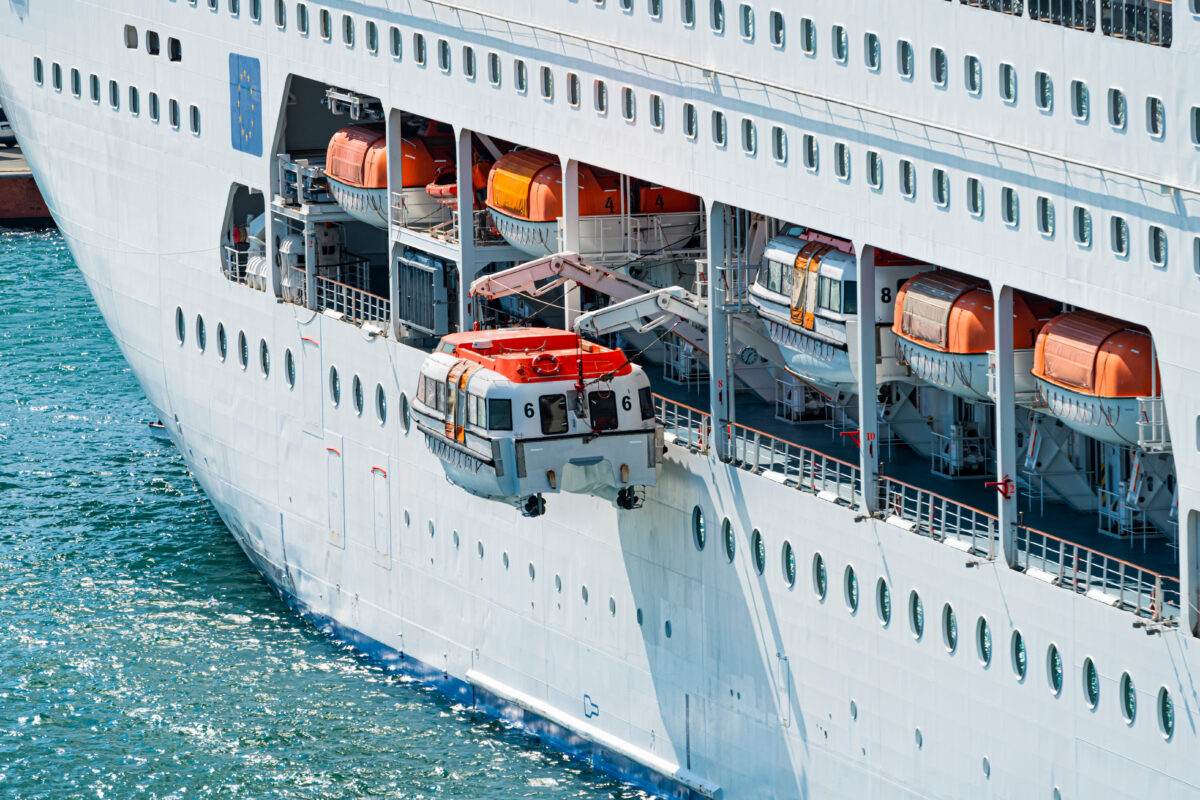
What About Groundings and Other Incidents?
Groundings and other incidents are more common than sinkings, but they’re not the same thing. Many result in ship damage, itinerary changes, and delays—not the loss of the vessel.
When something serious does happen, modern distress-alerting and coordination systems (including GMDSS) can speed up communication with rescue authorities and nearby ships. That’s part of why outcomes today often look very different from early-1900s tragedies.
Cruise ships aren’t “risk-free,” but they are engineered to stay stable and buy time.
Frequently Asked Questions
How many cruise ships sink a year?
True sinkings of ocean-going passenger ships are rare, and the “per year” number depends on what you include (ocean liners, cruise ships, ferries, wartime losses, ships at berth). That’s why reputable lists don’t always match. Modern leisure cruising operates on a huge scale, and total-loss events remain uncommon. There’s been only one in the past 10 years.
How many cruise ships have sunk?
The total depends on what you count as a “cruise ship” and what you count as “sinking.” If you include ocean-going passenger ships (both ocean liners and modern cruise ships) and count ships that sank or became a total loss, there have been 19 peacetime losses since 1912, plus 4 additional passenger ships lost during wartime.
When was the last cruise ship sinking?
The most recent widely reported cruise-ship sinking was August 2020, when the Orient Queen capsized/sank while docked in Beirut after the port explosion—not during an active cruise voyage. If you mean a ship that was underway on a cruise, the most widely cited modern example is the Costa Concordia incident on January 13, 2012 (grounding followed by capsizing/partial submergence and total loss).
Is Costa Concordia considered a “sinking”?
It’s often described that way, but the more accurate description is that it ran aground, capsized, and became a total loss. It’s included here because it’s one of the most famous modern cruise disasters—and it’s exactly the kind of event people have in mind when they ask, “Can a cruise ship sink?”
What’s more common than sinking on a cruise?
Mechanical issues that cause delays, medical disembarkations, and occasional incidents, such as groundings where the ship remains afloat and passengers are safely managed onboard or evacuated if needed.
Closing Thoughts
Cruise ship sinkings are exceptionally rare. Modern regulations, ship design, and crew training have dramatically changed what serious incidents look like compared with a century ago.

Elaine Warren
Founder & Crew Chief
Elaine founded this website after publishing the book The Family Cruise Companion’s Guide to Cruising With Kids. (Second edition recently released!) She has sailed on 45 cruises (and counting). She loves helping families navigate their way to an adventure-filled, fun, and memorable vacation.

